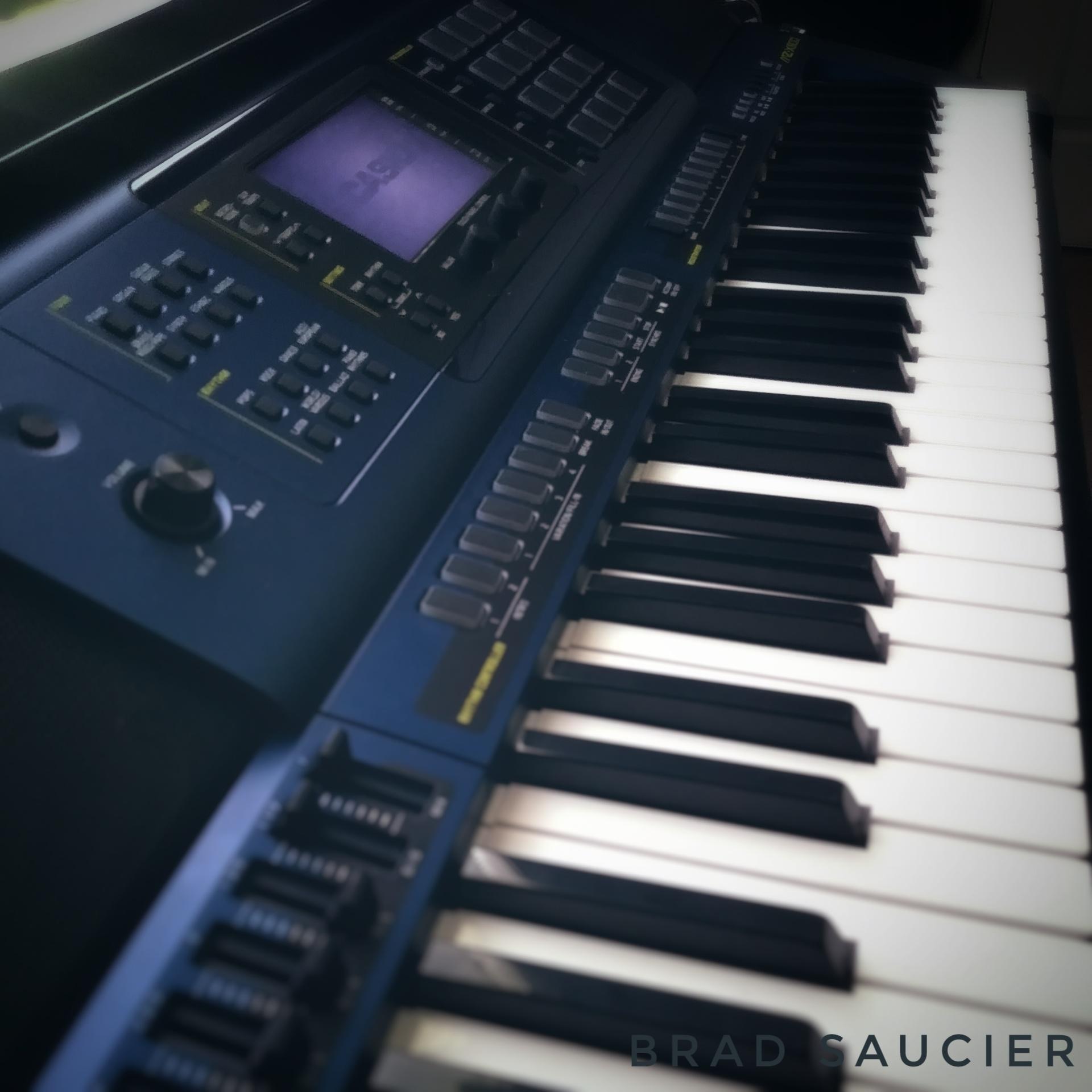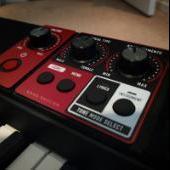-
Posts
8,746 -
Joined
-
Last visited
Content Type
Profiles
Forums
Downloads
Posts posted by Brad Saucier
-
-
tvl919, You will begin to understand it more and more. I too read the tutorial's looking for some kind of insight into synth programming. It's a good resource to start you on your way. You will soon leave that behind. You will begin to see a clearer picture of what it all means. You will begin to get a feel for the controls and know exactly what setting to tweak to get what your after. Although I'm still confused many times
 . And many things stump me. But know this: You'll never stop learning. Good luck!
. And many things stump me. But know this: You'll never stop learning. Good luck!-
 1
1
-
-
This sounds like an awsome experience. I hope you share what you can when you return. Tell Mr. Kashio I said "Hello".

-
Hi AndreiR,
Can the XW record your keyplay into the step sequencer? Is that how you recorded the loop? Never mind. I saw you mentioned earlier that you step edited this.
Also, you mentioned that now, with 60bpm instead of 120bpm, the whole loop fits on one line. We're getting into some music theory here. The timing of the sequencer was halved giving us twice the amount of time to play the same beat (from our point of view). From the sequencers' point of view the note lengths have changed (become shorter).
My suggestion for the bpm change was based on a theory of mine. But after thinking some more I realized that this won't help at all. I'm sorry for the wild goose chase.
I listened to your samples several times trying to pay close attention to what the sequencer was doing with your note lengths. It seems like it should be possible to get what your after. But I'm unsure how without having a XW synth to try it on. The way I recorded my sample was live keyplay recording into the pattern sequencer. I quantized the notes after recording them. But for the XW, it looks like quantize is only available in the phrase sequencer and not the step sequencer.
Also about the "tie" setting. I'll mention this in case you're not familiar with music theory. A "tie" is used when you want more than one recorded note to be played as a "single" note. Only the first note is played. The length of that "single" note will be equal to the value of all of the notes that are "tied". For example you can tie a half note to quarter note. The result will be a single note that is 3 quarters long. This might help you with step editing your loop.
-
O.k. This doesn't prove much I guess. But here is the same thing at 60bpm. I don't have step record so I quantized to 16th notes. I hope I did your song justice. My organ notes might be a hair short too. But for me, it's my playing at fault.
 Oh and this is all playback from the pattern sequencer.
Oh and this is all playback from the pattern sequencer. -
Try setting the tempo to 60bmp and rerecord your loop from scratch. In other words the tempo may be too fast for the beat your recording. The beat I heard in the Mp3 sounds more like 60bpm. I'll try it myself with the MZ.
-
Wow. Those notes really are short in the playback. I have an idea. Whats your tempo setting?
-
I'd like to hear the mp3. I'm interested to hear AndreiR's work.

-
I was thinking about this some more. In my original post I was looking for a way to extract individual user tones from an ALL file. That idea is too complicated. I think I now have a simpler aproach that may even be a possible easy add-on in a future firmware update (if one is expected) or future generations. Instead of a redesigned file system, an additional command could be added that controls or "automates" the existing "individual save" function. The command would simply run the existing SAVE function sequentially until all of the onboard tones (or any other user data category) are saved to disk. This would achieve the goal of saving all of the user tones individually in one shot.
I realize that the data editor is really the way to go when your near a computer. But it may be just as simple to do it onboard the keyboard. That being said, I'm not sure it really is that simple or even doable since I'm not a software programmer. But if it is, it's worth a shot.
I just thought I'd mention this in case it's a good idea. Sometimes my ideas are _____.

-
I understand your problem. The 24db refers to rolloff (db's per octave). I don't think any Casio's have a rolloff setting, at least not the XW-P1. As far as identifying a Hz value for cutoff. I haven't seen this in any Casio either. I have always worked with the 0-127 setting. 0 being the lowest, 60 somewhere in the middle and 127 being the highest. I've had to guess at this when reading synth tutorials. I'm curious myself if there is a good answer for this.
-
 1
1
-
-
Here's something to tinker with. Not neccessarily needed for a gig. But fun to try. The 1980-85 version of the british "Dr. Who" theme. Some good stuff in there. (What can I say? I like all sorts of stuff, I even play banjo - Earl Scruggs style)
or1984's Ghostbusters(single) - particularly the signature synth fills
Harold Faltermeyer's Axel F theme.- Lead synth - fills
-
Hi tvl919,
I'm curious, What do you have in mind if you knew the Hz value?
-
is it worthy of a sticky?
I vote yes.
This clears up a lot of things for me. I never would've guessed that the PX-5s was able to save the altered tones in the Stage Setting (ie. registration). I've had many frustrated moments when a registration is trying to recall a user tone tone that no longer exist or is mislocated. This is genius! and time saving! and comforting to know that your hard work will stay intact even if you lose the user tone outside of the stage setting.
-
 2
2
-
-
Dang AndreiR. I didn't know this topic was here until you mentioned it.
Your picture: You have a lot going on there. I'm sharing my bedroom with my setup. It's much smaller than yours.
Nice guitars. I play banjo myself (bluegrass). That's what I've been playing mostly for the past few years. Now I'm refocusing on piano. I like a wide range of music.
When I get the PX5 I'll have to post a pic here. Although its not an XW synth so it should probably should go in another section.
-
 1
1
-
-
Thanks Mike. I should just wait until I get the PX-5s in hand before I ask anything else. I'm just so excited I can't help it.
-
 3
3
-
-
Hi Dreamer,
Mike has posted about this earlier. He said that the stage settings are included in V1.10. The stage settings posted here in the download section are for backup purposes in case you accidentally lose them.
And Mike,
I see the improved KEY FOLLOW functions in Ver.1.10. (from the manual). I noticed that this is for Hex Layer tones and not melody tones. It has me wondering. Is a hex layer limited in any way as to which samples can be used in one? And, are melody tones single layer? I'm sorry, I'm used to the MZ-2000 with 4 layers for everything.
Also a side note for the downloads section: I wish there was a way to have the descriptions of a file tag along with the file when you download them. -
A question for Mike. Can detune amount be controlled by an LFO or is detune amount static/fixed?
Hi willf,
You don't get Mike today, he's busy. You got me.
 Just kidding. I'm sure he'll chime in.
Just kidding. I'm sure he'll chime in.Anyway,
I'm pretty sure it can. I'm seeing it in the PX-5 manual under LFO>PITCH. You can specify pitch/amp wave type, pitch rate, depth and delay.
-
Interesting... I just looked that up. Floating Split Point? Huh... It figures Apple would be the ones to come up with something like this. They're always thinking outside of the box. I wonder if anyone else did this before them.
-
would it be a sensible precaution to install batteries prior to updating the firmware in case of a power cut during the update?
I have had one instrument 'become a brick' as a result of such a power cut.
That's exactly what I was thinking! I was going to put batteries in as a precaution. If the PX-5s is anything like Casio's of the past, the batteries will kick in instantly without any noticeable interruption.
-
Gee Wiz guys. I'm still downloading it. Only 50% percent there. Got an hour to go and I started at my first post.
Internet on a budget. Gotta love it.

-
107 MB's! Broadband don't fail me now.!
-
I don't think Mike is coming back. He's probably thinking "those guys have gone somewhere that I don't want to go" .

-
Let's assume every key had a small in-built magnetic detector. I put on my left hand a glove which has tiny magnets built on the fingertips. When I press a key with my left hand, the keyboard detects the magnet and plays TONE A with an arpeggio for example. When the same key is pressed again by bare hands, it detects no magnetic fields, so it plays a different tone, TONE B without arpeggio but with a phrase for example.
Interesting...
 That would be a very unique feature.
That would be a very unique feature. -
Double P,
Is it what Mike said, a split, or:
Are you asking if there is any "keyboard" or "keyboard controller" than can intelligently identify and follow your two hands and possibly even your fingers. So that no matter what key on the keyboard your hand plays, only the tone assigned to your hand will sound when played.
If so, you just invented it! Go forth and become famous.
-
Dang man, that was...... big. Thanks.
Facebook? IDK I'll think about it. You realize your stuck with me after that, right.



"Song Ready / Stage Settings"
in Privia Pro PX-5S
Posted
I loved you description for HereIGoAgain. Show em how it's done Mike!
I just realized we should be able to comment on downloads under them.
Aerosmith - I Don't Wanna Miss A Thing > y/n